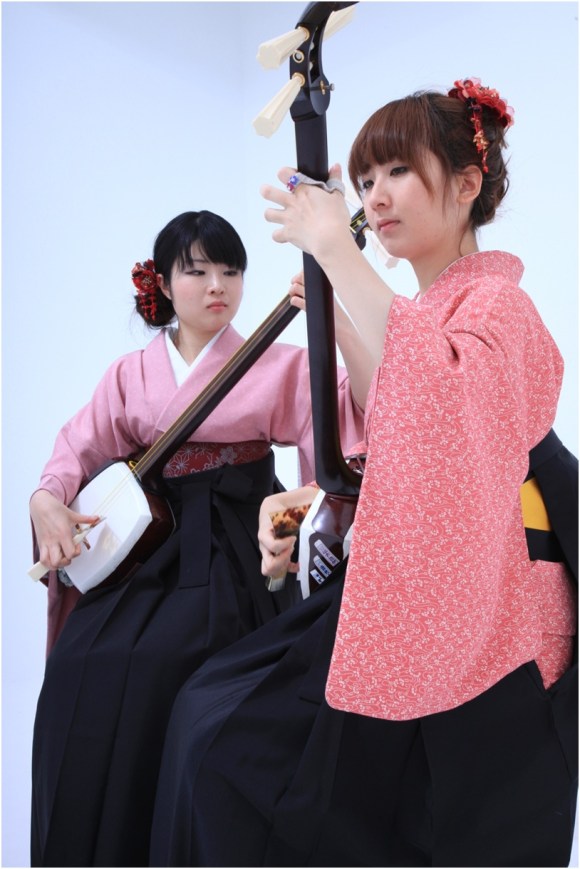
The world of traditional Japanese music is incredibly varied–there’s exciting min’you folk music, austere gagaku ancient imperial court music, and the ethereal tunes of Noh plays. But one genre in particular stands out among the all others: tsugaru-jamisen.
A fast, lively style of playing born out of min’you as performed by traveling entertainers, tsugaru-jamisen hails from Aomori Prefecture and is the youngest genre of “traditional” Japanese music. And, from Hiromitsu Agatsuma and the late Takahashi Chikuzan to the Yoshida Brothers and Kevin Kmetz, there is no shortage of talented, inspiring performers in the tsugaru-jamisen world.
But for us, one duo in particular stands out: Ki&Ki.
Even if you don’t recognize the name, you may already be familiar with these two incredibly talented young women thanks to their numerous YouTube videos. Recently we got the chance to sit down with the pair to learn a little bit about their history with tsugaru-jamisen.
The tsugaru-jamisen duo consists of Kanami Takeda (above, left), 24 years old, and Hikari Shirafuji (right), 23 years old. Though they’re both still in their early 20s, they have nearly two and a half decades of playing experience between them: Hikari started when she was only nine, thanks to her grandmother, and Kanami picked up the instrument when she was 14 after being amazed by a guest performance at her school. While the shamisen is generally seen as being an instrument for older people, these two took an instant liking to it and haven’t stopped playing since–though Hikari did mention that she kept her playing to herself in high school to avoid being teased by her classmates.
▼She’s definitely not hiding it any more!
First, we wanted to know how Ki&Ki came to be.
It turns out that Kanami is from Aichi Prefecture, about half way between Tokyo and Osaka, and Hikari is from Hyogo Prefecture—on the opposite side of Osaka. It’s quite a distance, so we wondered how in the world they met.
Through national tsugaru-jamisen competitions, of course!
While tsugaru-jamisen is still not a major instrument in Japan, there are a number of national competitions every year, which are divided by age group and gender. Both of the women regularly attended—and placed very highly—in these competitions from a young age, becaming “competition friends.” When they both moved to Tokyo for university in 2008, they took the opportunity to form their own group.
▼Kanami sings a traditional song as Hikari accompanies her on shamisen.
What’s with their name?
Written in Japanese as 輝&輝, the group’s name is pronounced “ki ki.” The kanji 輝, which can be read as “teru,” “ki,” or “kagayaku,” means “to shine,” the perfect word to describe their fast, energetic music. When asked why they chose the name, Hikari explained that as they come from very different places and obviously had different teachers, their playing styles really aren’t similar at all. Kanami added that there are different “colors” to how they play their instruments, so when their two styles are combined, it creates an altogether newer, brighter style!
So what do they sound like?
For those of you who are already familiar with tsugaru-jamisen, their music may not always be exactly what you’re expecting. While they do play many traditional songs—always a crowd-pleaser—they write and perform original songs as well, though they manage to imbue every note with the tsugaru-jamisen spirit.
On the other hand, if you are new to the shamisen, you’re probably wondering what it sounds like in general. When asked how to describe their instruments to someone who’d never heard a shamisen before, they replied that it was like “a Japanese banjo!”
Still, some things simply need to be seen (and heard) to be understood, so here’s a video of some of the highlights from the show we caught last weekend. Bet you wish you had been there!
What is “tsugaru-jamisen”?
The tsugaru-jamisen is quite different to the average shamisen in shape and in how it’s played–being noticeably larger and louder. The extra size makes the instruments sturdier, which in turn allows performers to play more aggressively. Like Takahashi Chikuzan, who helped popularize the style after World War II, tsugaru-jamisen players “attack” the strings with their bachi–a wide-headed plectrum which looks oddly similar to a paint scraper. Thanks to the instrument’s natural reverb and the percussive playing, many compare tsugaru-jamisen to rock music–or even heavy metal.
▼The crowd listens carefully as the young women fly through a song.
When asked how their original songs differ from traditional tsugaru-jamisen songs, they explained that they like to use western rhythms with a “tsugaru-jamisen heart.” Our favorite original song is “Teruteru,” a swinging number with a tongue-in-cheek name: much to the chagrin of Ki&Ki, many people mispronounce their name as “Teru Teru.” A sense of humor is important, right? “Besides,” they told us, “it still sounds cute!”
▼Taking a moment to have a laugh with the audience.
In addition to their original songs and the more traditional tsugaru-jamisen songs, they also play a number of cover songs reworked for their instruments, like the legendary “The Path of the Wind” from My Neighbor Totoro. This combination of musical stylings perfectly typifies the group, capturing both their youthful spirit and their dedication to traditional music.
Where can you see them?
We mentioned before that you may have noticed their videos on YouTube—they have dozens showcasing performances in places all over Tokyo–from Ueno Park to various national competitions to a moving train. The pair keeps very busy, playing multiple times a week, often with Heaven Artist, an organization that provides permits and locations for street performers. They keep an updated list of their future performances on their website, which can be found here. Unfortunately, it’s Japanese only–but maybe we can talk them into posting an English version as well!
This is their sixth year performing as Ki&Ki, but what’s next?
“To perform and get famous!” they laughed before adding that they’re trying to help tsugaru-jamisen grow. The pair is especially keen on fostering interest in the music among young people—hence their wide variety of songs. By combining traditional music with contemporary, they hope they’ll be able to attract a wider audience.
They also mentioned a special event/performance on September 8 with a slew of guest artists contributing to the show. Called “Yuenchi,” or amusement park, their goal is not merely to entertain the audience–they also want to get the audience involved. As tsugaru-jamisen music is fundamentally “folk music” developed by buskers, there’s lots of clapping, shouting, and singing for the more enthusiastic audience members.
▼The shamisen often requires retuning while playing!
Okay, by now, you’re probably ready to hear some more of this amazing music, right?
Here’s their music video for the food-themed song “Motsunabe.”
We hope you enjoy Ki&Ki’s music as much as we do! If you’re interested in hearing more, you can check out videos on their website or on YouTube. They also have CDs available, which can be ordered online. Fortunately, the form is in English and, yes, they ship internationally!
Finally, if you are going to be in Tokyo in September, you’ll surely want to attend their Yuenchi event. Tickets are available online (Japanese only), as well as at their shows or at the door on the day of the concert if not sold out.
Event name: Yuenchi
Performers: Ki&Ki, Sachie Asano (Tsugaru dance), Kazuki Arai (bass), Kayoko Tsujita (percussion), Aki Ikehara (saxophone), +ism (salaryman dance/performance)
Date: September 8, 2013
Time: Doors 4:30, Start 5:00
Tickets: 3,000 yen (about US$30)
Location: Nogatakumin Hall
Address: Tokyo, Nakano, Nogata 5-3-1
Finally, if you’re interested in learning more about tsugaru-jamisen, the pair recommended Bachido, a web-based community where you can learn more about the history of tsugaru-jamisen and find free music lessons.
All images by RocketNews24, except featured photo by Ki&Ki.


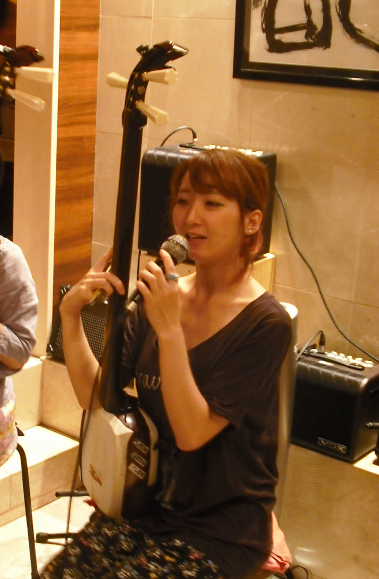

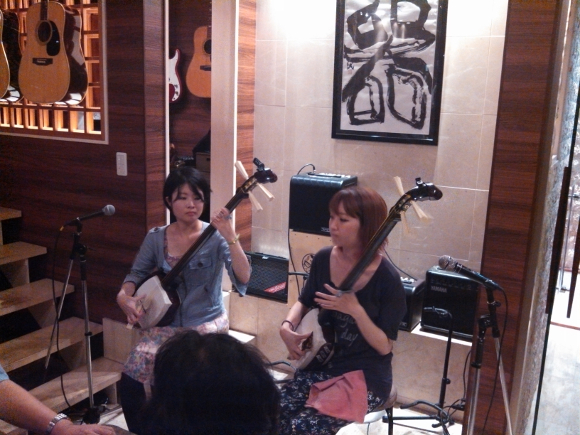

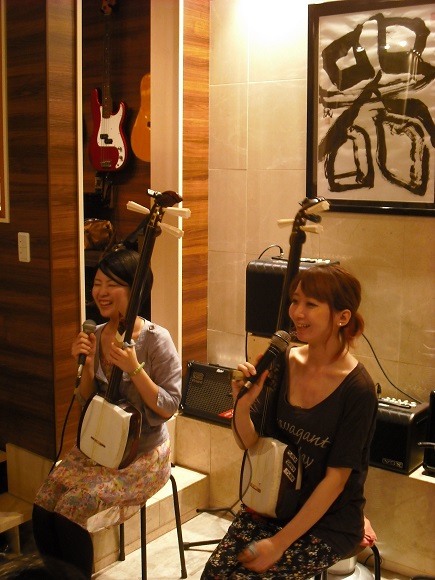

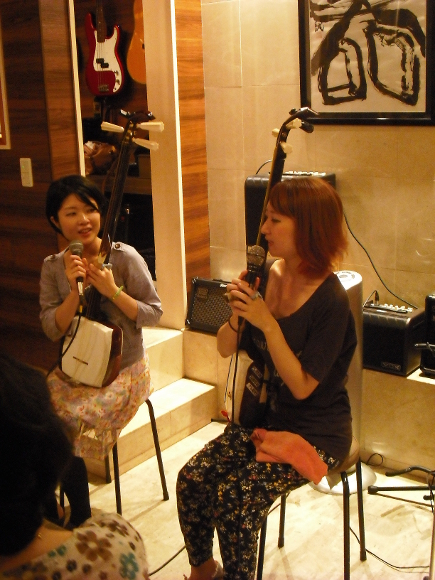
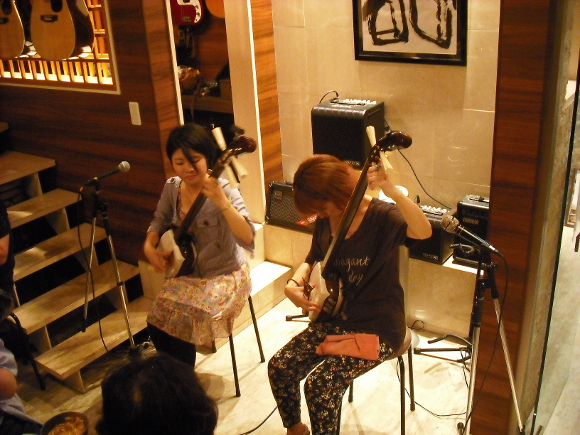

 Monsters of Shamisen: New music for an old instrument 【J-Tunes】
Monsters of Shamisen: New music for an old instrument 【J-Tunes】 Famikoto celebrates Nintendo with medley of game music played on traditional instruments【J-Tunes】
Famikoto celebrates Nintendo with medley of game music played on traditional instruments【J-Tunes】 Six of our favorite songs performed on traditional Japanese instruments to get you to the weekend
Six of our favorite songs performed on traditional Japanese instruments to get you to the weekend Shamisen player, guitarist, and violinist team up for epic impromptu street collaboration 【Video】
Shamisen player, guitarist, and violinist team up for epic impromptu street collaboration 【Video】 Shovel shamisen is a quirky and fun addition to the Japanese music scene【Video】
Shovel shamisen is a quirky and fun addition to the Japanese music scene【Video】 Pizza Hut Japan’s hot lucky bags are perfect for a New Year’s pizza party
Pizza Hut Japan’s hot lucky bags are perfect for a New Year’s pizza party Cup Noodle tries an authentic Jiro-style ramen, but something’s not quite right
Cup Noodle tries an authentic Jiro-style ramen, but something’s not quite right Hayao Miyazaki says Happy New Year to Studio Ghibli fans with new art for Year of the Horse
Hayao Miyazaki says Happy New Year to Studio Ghibli fans with new art for Year of the Horse New form of luxurious poverty arrives at Japanese convenience stores with Tenkasu Gohan
New form of luxurious poverty arrives at Japanese convenience stores with Tenkasu Gohan Combining all of Nissin’s new Cup Noodle series into one powerful bowl of ramen
Combining all of Nissin’s new Cup Noodle series into one powerful bowl of ramen That time Seiji called JASRAC to ask why he didn’t get paid royalties for his song being on TV
That time Seiji called JASRAC to ask why he didn’t get paid royalties for his song being on TV The 21st century Game Boy we wish Nintendo were working on【Pics】
The 21st century Game Boy we wish Nintendo were working on【Pics】 We visit the full-scale Evangelion statue in Kyoto and particularly delight in the food tie-ins
We visit the full-scale Evangelion statue in Kyoto and particularly delight in the food tie-ins Is it rude to sing along at concerts in Japan? We ask a pro musician for his take
Is it rude to sing along at concerts in Japan? We ask a pro musician for his take Harajuku’s new permanent Tamagotchi shop is filled with cuteness and a surprising lack of poop
Harajuku’s new permanent Tamagotchi shop is filled with cuteness and a surprising lack of poop Starbucks Japan ready to get Year of the Horse started with adorable drinkware and plushies【Pics】
Starbucks Japan ready to get Year of the Horse started with adorable drinkware and plushies【Pics】 7 great places to see Mt. Fuji from without having to climb it
7 great places to see Mt. Fuji from without having to climb it Cyberpunk anime meets traditional culture in Ghost in the Shell gold leaf Japanese changing screens
Cyberpunk anime meets traditional culture in Ghost in the Shell gold leaf Japanese changing screens Hello Kitty Choco Egg figures are an adorable trip through three periods of Japanese pop culture【Pics】
Hello Kitty Choco Egg figures are an adorable trip through three periods of Japanese pop culture【Pics】 We found possibly the quietest Japanese-style hotel in Tokyo’s bustling Shinjuku district
We found possibly the quietest Japanese-style hotel in Tokyo’s bustling Shinjuku district 7-Eleven Japan’s ramen-cooking robot whipped us up a bowl of noodles【Taste test】
7-Eleven Japan’s ramen-cooking robot whipped us up a bowl of noodles【Taste test】 Sumo Sanrio! Hello Kitty and pals team up with Japan Sumo Association for new merch【Pics】
Sumo Sanrio! Hello Kitty and pals team up with Japan Sumo Association for new merch【Pics】 Japan’s oldest largetooth sawfish in captivity back on display in Mie Prefecture
Japan’s oldest largetooth sawfish in captivity back on display in Mie Prefecture More Than a Capsule Stay: Why Solo Travelers Choose “global cabin Yokohama Chinatown”
More Than a Capsule Stay: Why Solo Travelers Choose “global cabin Yokohama Chinatown” 7-Eleven Japan starts new temporary luggage storage service in over 300 branches
7-Eleven Japan starts new temporary luggage storage service in over 300 branches Disillusionment at Tsukiji’s tourist-target prices led us to a great ramen restaurant in Tokyo
Disillusionment at Tsukiji’s tourist-target prices led us to a great ramen restaurant in Tokyo Starbucks teams up with 166-year-old Kyoto doll maker for Year of the Horse decorations【Photos】
Starbucks teams up with 166-year-old Kyoto doll maker for Year of the Horse decorations【Photos】 Tokyo considering law requiring more trash cans following litter increase in heavily touristed area
Tokyo considering law requiring more trash cans following litter increase in heavily touristed area Tokyo’s Tsukiji sushi neighborhood asks tour groups to stay away for the rest of the month
Tokyo’s Tsukiji sushi neighborhood asks tour groups to stay away for the rest of the month Tokyo event lets you travel back in time, for free, to celebrate 100 years since Showa era start
Tokyo event lets you travel back in time, for free, to celebrate 100 years since Showa era start Sanrio theme park in Japan announces plans to expand into a Sanrio resort
Sanrio theme park in Japan announces plans to expand into a Sanrio resort Japan may add Japanese language proficiency, lifestyle classes to permanent foreign resident requirements
Japan may add Japanese language proficiency, lifestyle classes to permanent foreign resident requirements Stamina-destroying “Paralysis Noodles” are Tokyo’s newest over-the-top ramen innovation
Stamina-destroying “Paralysis Noodles” are Tokyo’s newest over-the-top ramen innovation Survey asks foreign tourists what bothered them in Japan, more than half gave same answer
Survey asks foreign tourists what bothered them in Japan, more than half gave same answer Japan’s human washing machines will go on sale to general public, demos to be held in Tokyo
Japan’s human washing machines will go on sale to general public, demos to be held in Tokyo Japan’s deadliest food claims more victims, but why do people keep eating it for New Year’s?
Japan’s deadliest food claims more victims, but why do people keep eating it for New Year’s? We deeply regret going into this tunnel on our walk in the mountains of Japan
We deeply regret going into this tunnel on our walk in the mountains of Japan Studio Ghibli releases Kodama forest spirits from Princess Mononoke to light up your home
Studio Ghibli releases Kodama forest spirits from Princess Mononoke to light up your home Major Japanese hotel chain says reservations via overseas booking sites may not be valid
Major Japanese hotel chain says reservations via overseas booking sites may not be valid Put sesame oil in your coffee? Japanese maker says it’s the best way to start your day【Taste test】
Put sesame oil in your coffee? Japanese maker says it’s the best way to start your day【Taste test】 No more using real katana for tourism activities, Japan’s National Police Agency says
No more using real katana for tourism activities, Japan’s National Police Agency says Starbucks Japan reveals new sakura drinkware collection, inspired by evening cherry blossoms
Starbucks Japan reveals new sakura drinkware collection, inspired by evening cherry blossoms Updated cherry blossom forecast shows extra-long sakura season for Japan this year
Updated cherry blossom forecast shows extra-long sakura season for Japan this year Rocking out with the Wagakki Band: Giving vocaloids a human voice
Rocking out with the Wagakki Band: Giving vocaloids a human voice No-Face has apparently moved to Aomori and taken up playing tsugaru-jamisen on the street
No-Face has apparently moved to Aomori and taken up playing tsugaru-jamisen on the street Watch over 20 drones dance in unison with a trio of shamisen players in front of Fuji【Video】
Watch over 20 drones dance in unison with a trio of shamisen players in front of Fuji【Video】 Studio Ghibli’s No-Face appears again on the streets of Japan to rock out on his shamisen 【Video】
Studio Ghibli’s No-Face appears again on the streets of Japan to rock out on his shamisen 【Video】 BABYMETAL invasion of the West marches on, everyone welcomes new kawaii overlords【VIDEOS】
BABYMETAL invasion of the West marches on, everyone welcomes new kawaii overlords【VIDEOS】 Is this real life? Canadian musician becomes apprentice to Japan’s world-famous shamisen masters
Is this real life? Canadian musician becomes apprentice to Japan’s world-famous shamisen masters Michael Jackson’s “Smooth Criminal” played on Japanese instruments? Yes, please!【Video】
Michael Jackson’s “Smooth Criminal” played on Japanese instruments? Yes, please!【Video】 Beautiful shamisen featuring original illustration by Final Fantasy designer now on sale
Beautiful shamisen featuring original illustration by Final Fantasy designer now on sale Haneto Izakaya: Enjoy Aomori food and music from the comfort of Tokyo
Haneto Izakaya: Enjoy Aomori food and music from the comfort of Tokyo Japanese comedian uses traditional Japanese court instrument to play…the McDonald’s fryer alarm?
Japanese comedian uses traditional Japanese court instrument to play…the McDonald’s fryer alarm? Wagakki Band’s newest video “Strong Fate” might just be the most epic one yet!
Wagakki Band’s newest video “Strong Fate” might just be the most epic one yet! Final Fantasy VII battle music sounds even better when played on a shamisen【Video】
Final Fantasy VII battle music sounds even better when played on a shamisen【Video】 Sailor Moon’s Moonlight Densetsu as played on traditional Japanese instruments
Sailor Moon’s Moonlight Densetsu as played on traditional Japanese instruments Tokyo Bon Japanglish song is a crazy way to learn Japanese 【Video】
Tokyo Bon Japanglish song is a crazy way to learn Japanese 【Video】 Aragehonji breathes new life into traditional Japanese folk music
Aragehonji breathes new life into traditional Japanese folk music Final Fantasy fans around the world share musical creations with Home de Chocobo challenge【Video】
Final Fantasy fans around the world share musical creations with Home de Chocobo challenge【Video】
Leave a Reply